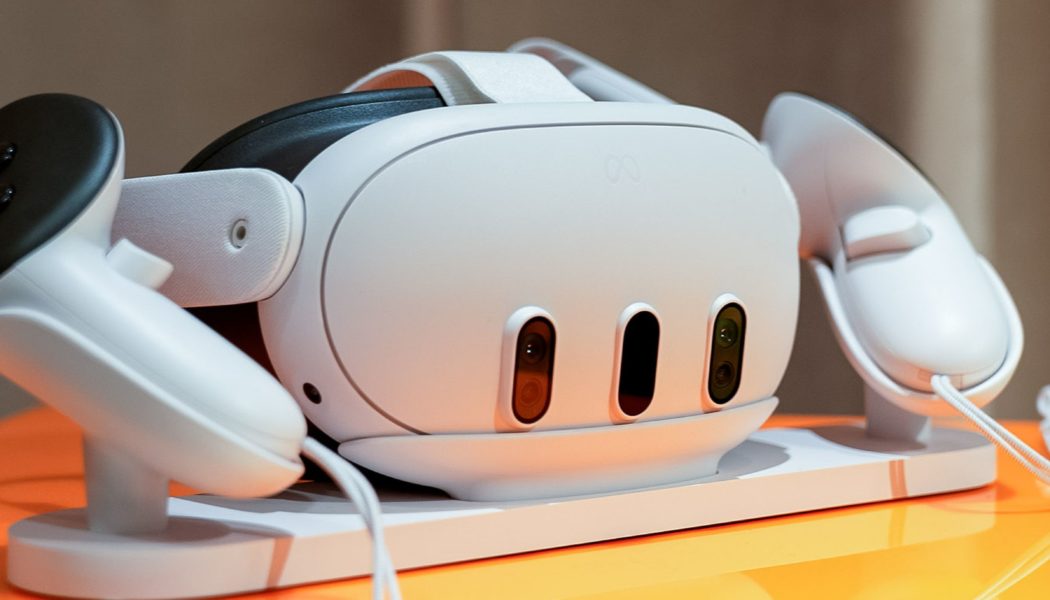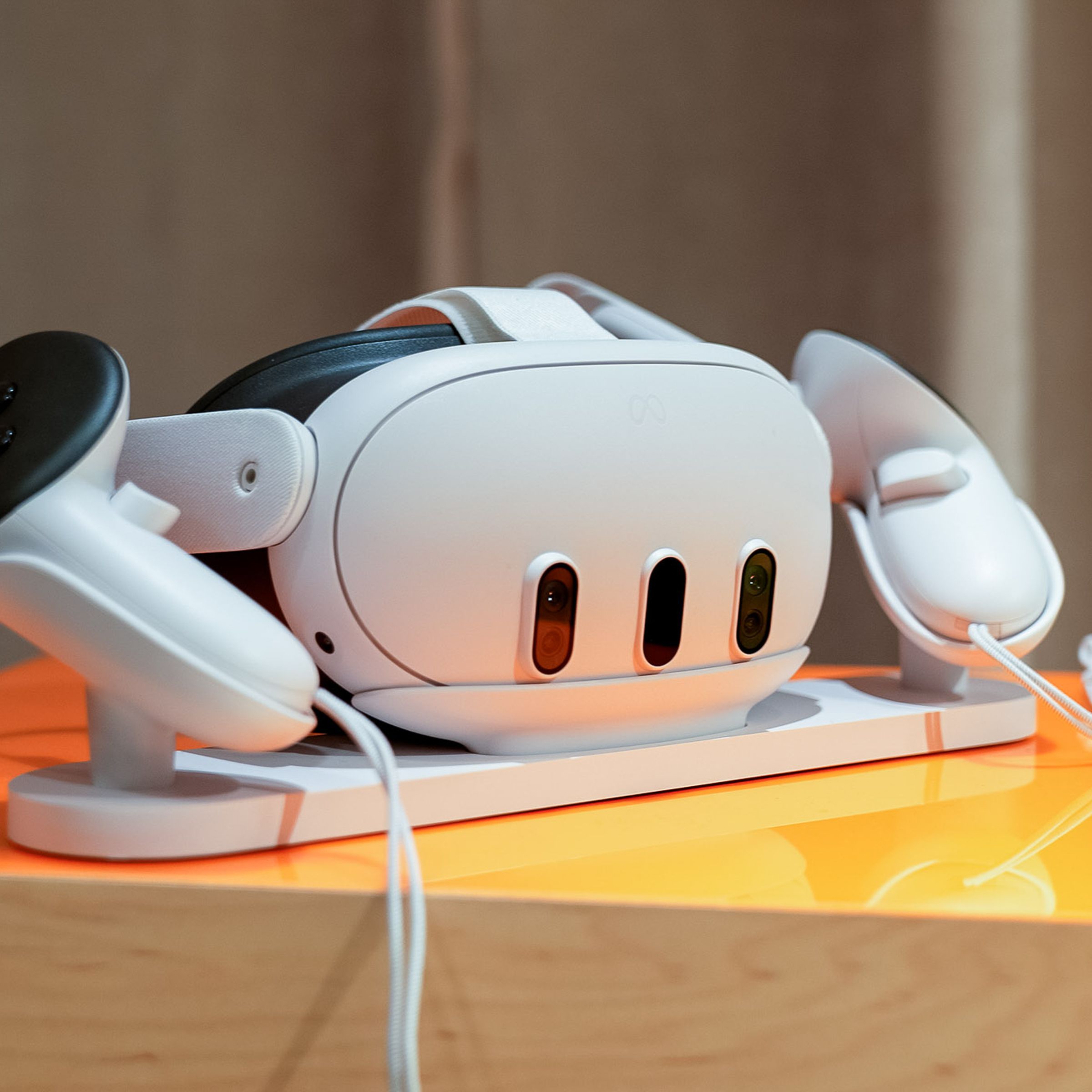
I can’t tell if Meta is trying too hard to make me look at the world through a screen strapped to my face or if it’s not trying hard enough.
On October 10th, Meta will begin shipping the Quest 3, its latest virtual reality headset. The $499 Quest 3 delivers some things you might expect from an upgrade to the industry’s top-selling VR games console, like a higher-resolution display and an upgraded processor. But Meta has also made the Quest 3 part of the company’s plunge into “mixed reality” (MR): a term that, right now, typically refers to a video feed overlaid with digital objects passed through to a headset display. Meta’s mixed reality seems to be getting better, but it’s still struggling to demonstrate that the new feature is worth buying into — at least before launch.

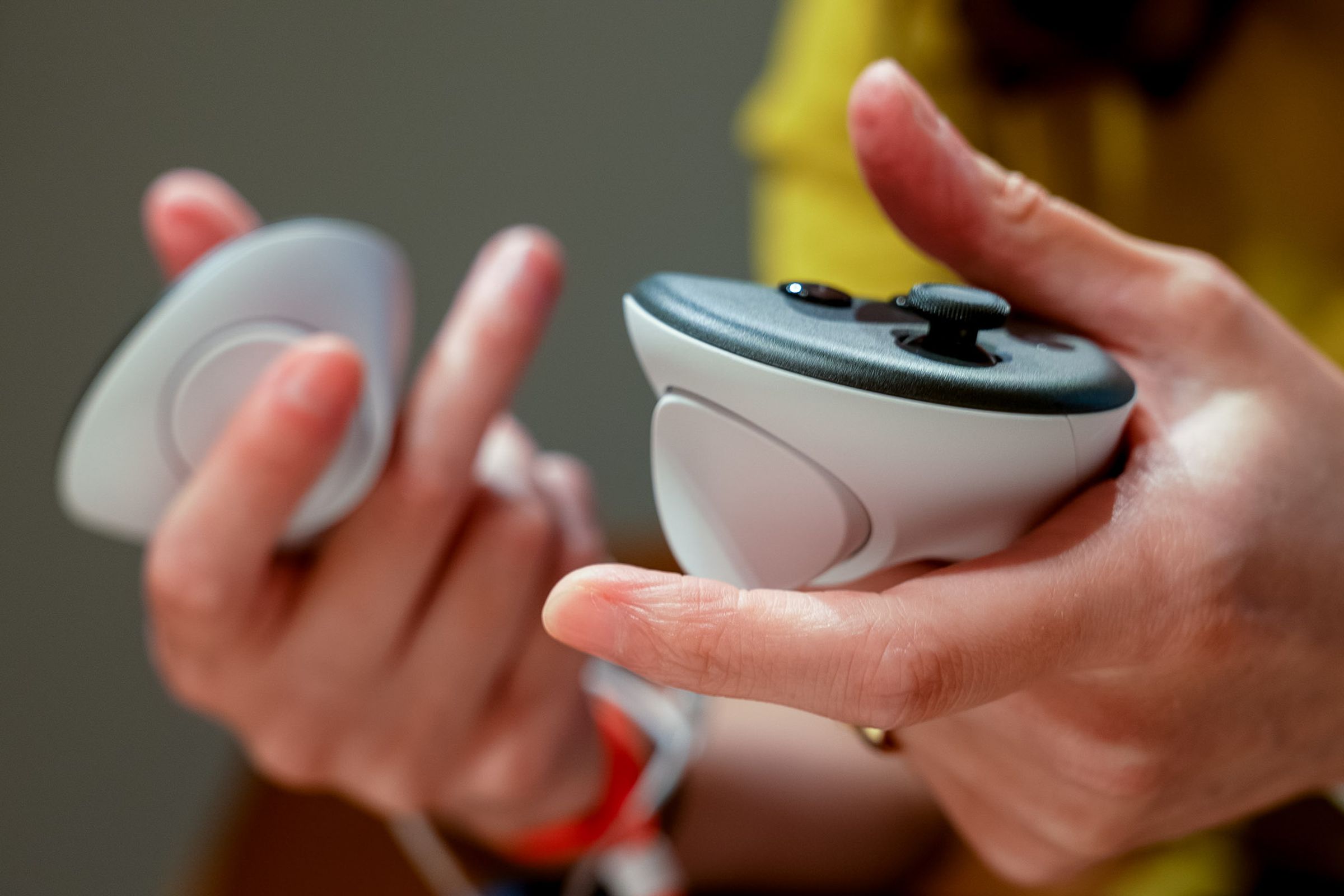
I tried the Meta Quest 3 for slightly over an hour at a briefing before today’s Meta Connect event. That’s not enough to deliver a verdict on the headset’s quality, but it offered a sense of what we should be looking for when it ships next month. The Quest 3 is a slightly more compact iteration of the Quest 2 that promises a screen clarity bump and more graphically intensive games. It features dual 2064 x 2208 pixel displays compared to the Quest 2’s 1832 x 1920 pixels per eye, and it’s the first product to ship with a second-generation Qualcomm Snapdragon XR2 chipset, which Meta says can achieve graphics performance that’s twice as fast as the Quest 2’s first-gen XR2.
This chip won’t match a PC graphics card. But a demo of the adventure game Red Matter 2 showed the visual difference with a toggle between the Quest 3 and Quest 2 detail level — including text that was only readable on the Quest 3 and props that went from blocky mobile game graphics to relatively detailed models. (One complicating factor: the Quest 2 version was designed for a lower-resolution headset, too.) Meta says all of its high-profile Quest 3 launch titles are also on the Quest 2, but I wouldn’t be surprised to see Quest 3 exclusives pop up soon, taking advantage of its higher visual fidelity.
The Quest 3 has also slimmed down the Quest 2’s controllers. Where the Quest 2 places a big LED tracking ring over the user’s knuckles, the Quest 3 removes it and (Meta promises) compensates with improved tracking algorithms. Its controllers look like those on last year’s Quest Pro but without the built-in cameras, which cuts down dramatically on their power consumption and might remove the brief wake-up delay the Pro controller cameras suffered from. The Quest 3’s controllers still use disposable batteries, but it’s launching with a charging dock that includes rechargeables you can slot into them instead — something many Quest 2 owners already did on their own. The Quest headset battery itself is supposed to last between two and three hours, similar to the Quest 2 and better than the Quest Pro. While Qualcomm says the second-gen XR2’s GPU is 50 percent more efficient than its predecessor, Meta clearly opted for performance over increased battery.
The device is also a little sportier-looking than its predecessor. The Quest 2 originally shipped with a foam face mask that was annoying to clean, but I used the Quest 3 with a soft rubber mask that seems decently wipeable if you’ve just sweated through a Beat Saber session. Its default head fixture has been redesigned to better accommodate hair buns and ponytails with a Y-shaped top strap, and you can still buy a version of the Elite Strap with or without a supplemental battery. (It’s not interchangeable with the Quest 2’s version.) In addition to the default black face mask and white cloth strap, you can get a mask and strap in “Blood Orange” or “Elemental Blue”. It’s a hair heavier than the Quest 2 — 515 grams compared to 503 grams — but still significantly lighter than the 722-gram Quest Pro, although, as with the Quest 2, the Elite Strap will probably add some heft.
And Meta has added a few small quality-of-life adjustability features. There’s now a focus wheel to let you adjust the distance between lenses while you’re wearing the headset, rather than the Quest 2’s awkward manual lens snapping. The lenses have a slimmer profile, and a pair of buttons on the inside will let you change their distance from your face, accommodating people wearing glasses. This worked awkwardly in my demo: the buttons felt like they were constantly getting stuck, and I had to slide each side of the headset out separately. But it’s possible it will feel more natural when I’m not trying it for the first time. And the Quest 3 didn’t flash constant fit and calibration reminders on my screen the way the Quest Pro did — a feature that was well meaning but way too sensitive.

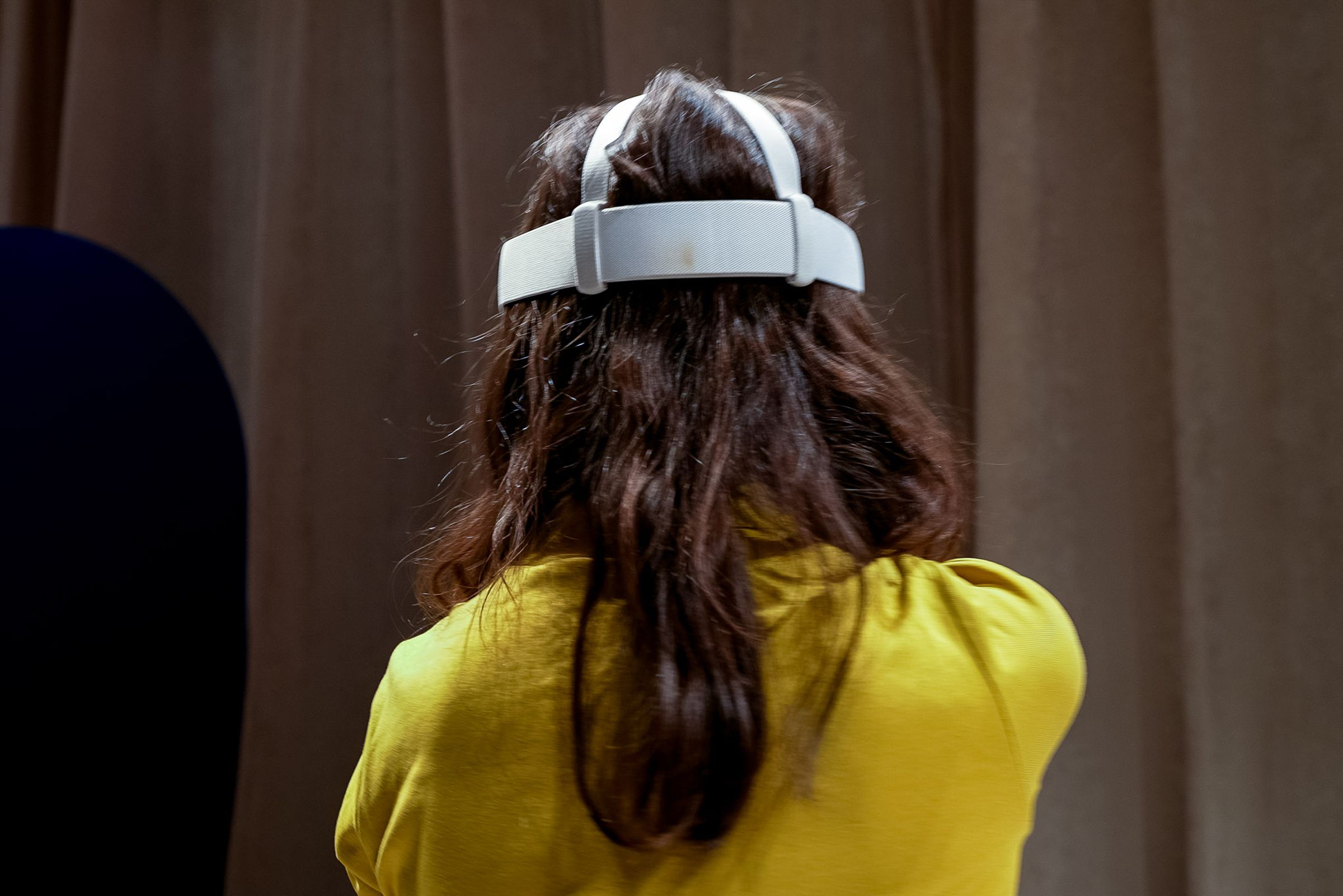

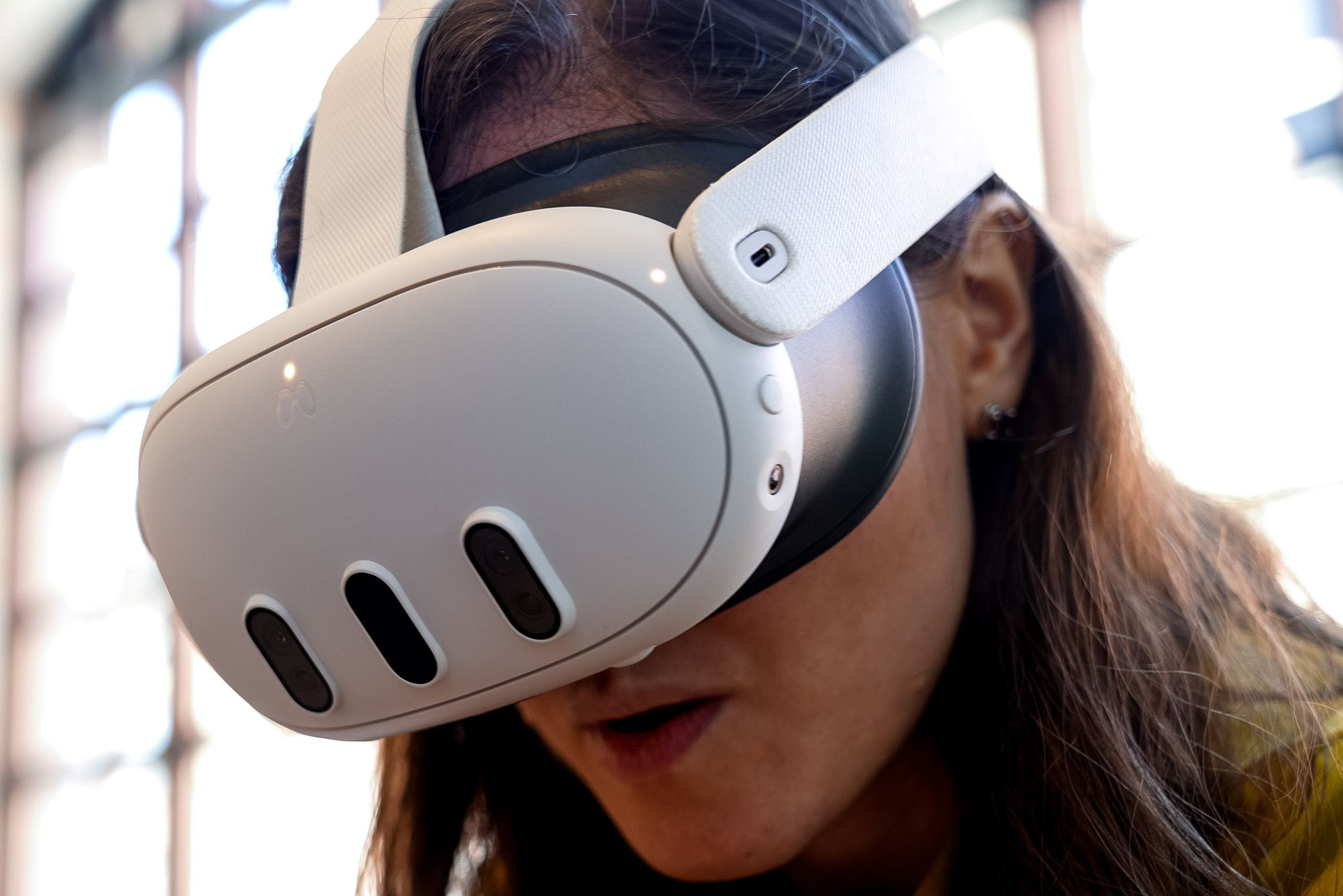
These changes seemingly add up to an iterative update, except that Meta also has one more new feature: mixed reality. The Quest 3 features two color cameras similar to the Quest Pro, offering the kind of passthrough feed that was a major selling point for that headset. Meta is billing it as the “first mainstream headset built for mixed reality,” bringing what was previously a premium feature to the company’s midrange headset line.
What’s more, in my demo, Meta’s mixed reality seemed notably improved. From people who have tried the Apple Vision Pro (I haven’t), I hear the Quest 3 doesn’t nearly measure up — which is reasonable given that it costs a fraction of the price. But its passthrough seems noticeably less grainy than the Quest Pro’s and vastly better than the fuzzy black-and-white feed on the Quest 2. And the color balance seems far more natural, at least under the controlled environment in which I tried it. I could do things like check my phone through the passthrough feed, while the Quest Pro tended to wash it out to an unreadable blank. Qualcomm says the XR2 Gen 2 chip is capable of just 12 millisecond passthrough latency, on par with Apple’s Vision Pro, but it depends on the resolution of the images being sent by the headset’s cameras.
The Quest 3 also has a depth sensor that wasn’t included on the Quest 2 or the Quest Pro, which means it should be able to scan your physical surroundings with more accuracy, detecting where walls and objects are placed. Unlike with Meta’s earlier headsets, you don’t have to use your controller to trace a boundary for virtual reality mode. You can let the headset suggest one and manually modify it as necessary, similar to the PlayStation VR2’s setup process. Double-tapping your right temple will swap you from virtual to mixed reality and vice versa, making it easy to briefly dip out of a VR experience.
Once you’re in mixed reality, though… I’m still not sure how much there is to do.
Meta is long past the days of basic virtual reality tech demos. The company has consistently funded and acquired strong VR apps and games, from early Oculus Rift titles like Superhot and The Climb to the excellent Quest 2 port of Resident Evil 4 and indie breakout hit Beat Saber, which helped establish fitness as a major category for VR. (Meta bought Beat Saber’s studio and the developers of fitness app Supernatural over the protests of antitrust watchdogs.) It’s typically very good at giving VR demos: during my Quest 3 test, I tried out the upcoming Assassin’s Creed Nexus, which — despite controls that seemed clunky next to Sony’s so-close-to-great Horizon PlayStation VR2 climbing game — promises a full-fledged VR entry in a bestselling franchise.
I found little of that promise in the Quest 3’s mixed reality demos. The best one involved me and one other person putting on headsets and sitting at a coffee table, where we called up a virtual floating arena and steered tiny robots around punching each other. The passthrough video meant we could see our surroundings and each other, making it feel more like playing a board game than descending into a completely separate world. That’s neat — but the experience wasn’t something I’d do for more than a few minutes.
Other MR apps were simply frustrating. A Stranger Things game used the hand-tracking feature that all current Quest headsets support, letting me open portals and move bat creatures with hand gestures. But the game’s use of these gestures felt awkward and unreliable, and the experience was short and on-rails. I played a decent minigame about blasting cute fuzzy aliens to capture them, but it was mostly a slower rehash of a HoloLens demo I tried in 2015.
Don’t get me wrong: I’m happy Meta has streamlined the Quest 3 setup process with its new tech, and the Quest Pro had a few cool mixed reality apps, like a painting workshop, that could appear on the Quest 3. (This demo day seemed almost exclusively focused on games, which is a stark contrast to how Meta pitched the productivity-focused Quest Pro.) But compared to Meta’s proactive work pushing VR development forward, its MR demos made the medium still seem like a solution looking for a problem.
More mixed reality experiences are coming, including one based on Ghostbusters and some more complex-looking tabletop experiences. Meta also promises you’ll be able to watch streaming TV on a virtual screen, and it’s introducing MR widgets called “augments” that let you place persistent virtual objects around your real living space, including an iHeartRadio widget and a bobblehead of your Supernatural trainer. Combine that with the Quest Pro’s existing work-oriented MR apps, and Meta’s overall MR pitch seems similar to that of the Apple Vision Pro: a really big virtual screen that can substitute for your TV and monitor. I find myself left cold by this pitch, at least for the current generation of headsets — but I’ve heard enough people express interest in it that I’m willing to concede there could be a market.

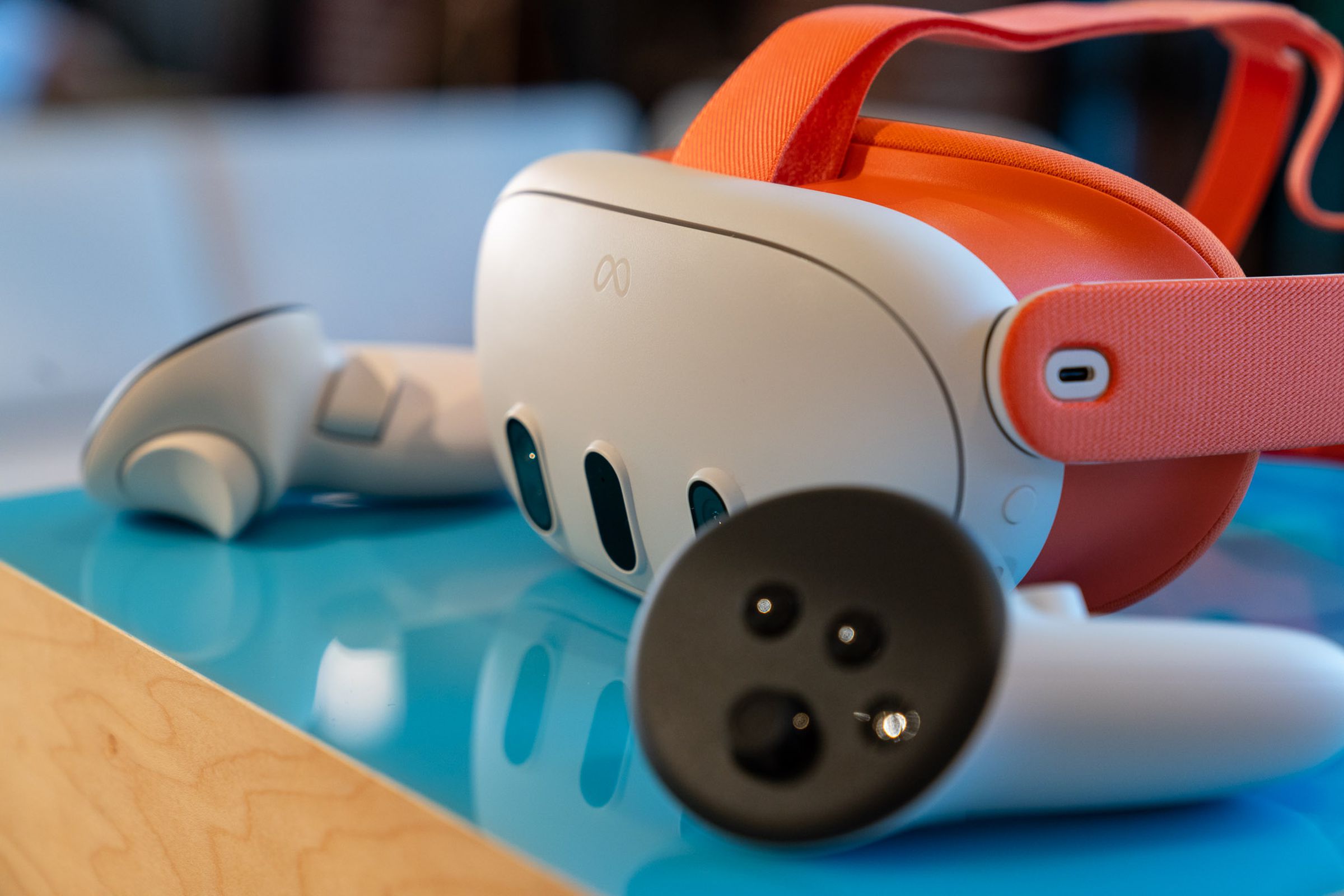
Even so, while I haven’t tried the Quest 3 nearly long enough to render a judgment, I’m not confident it’s a viable substitute for your other screens just yet. As with most VR headsets, I spent my demo time struggling to find a comfortable fit — because no matter how well designed they are, current-gen devices are just unavoidably bulky. The Elite Strap might help with that, but this still isn’t something I want to wear all day for work or slip on to watch some TV during dinner.
Fortunately, the MR features don’t make the Quest 3 as pricey as the Quest Pro, which, even after a major price drop, costs about twice as much as the Quest 3. (One potential reason for that price difference: the Quest 3 doesn’t have eye tracking, a feature available on the Quest Pro and PSVR 2.) The Quest 3’s base 128GB model costs $200 more than the Quest 2, which sells for $299, and the new headset’s 512GB model will cost you $649. That’s not outlandishly pricey; it’s in the same cost ballpark as the PSVR 2 before the cost of a PlayStation 5.
I’m itching to try the Quest 3 outside of the confines of a demo space and see what developers can do with its upgraded specs for full VR. I’ll keep an open mind about its mixed reality features, too. But Meta seems to see MR as the future of the Quest lineup — and it hasn’t convinced me that’s a good thing.
